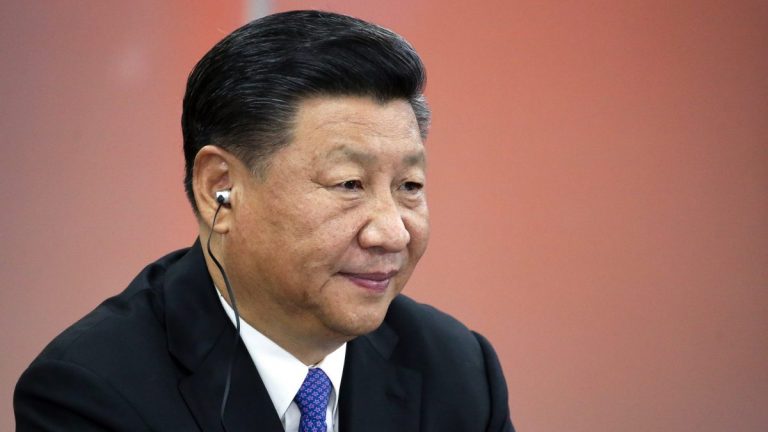
Table of Contents
SOURCE: THE PRINT
In the past few days, attention has been riveted on the India-China border where a series of stand-offs have taken place between the armed forces of the two countries. In one instance, at the Galwan Valley in Ladakh, China has violated the status quo intruding into territory that is clearly on the Indian side of the Line of Actual Control, or LAC. The stand-off there continues even while bilateral mechanisms set up to handle such incidents have been activated.
The eruption of multiple incidents across both the eastern and western sectors of the border within a short time span of a couple of weeks points to higher-level coordination and command. The political intent behind them needs to be understood as also the overall context in which they are taking place.
The political intent is quite simply to put India on the defensive, convey China’s ability to create trouble at the border at will and persuade New Delhi to stay clear of actions by its adversaries, in particular, the US to confront China whether on the coronavirus investigations, the resumption of Taiwan’s observer status at the WHO, and now the extension of China’s national security law to Hong Kong in violation of its commitment to respect Hong Kong’s autonomy for 50 years under the ‘one country two systems’ pledge made in 1997.
This aggressive behaviour is part of a pattern which we are witnessing in the Taiwan Straits and the South China Sea, where similar incidents have been taking place. This is accompanied by what has come to be known as ‘Wolf Warrior diplomacy’ referring to a very popular thriller movie Wolf Warrior 2 (2017), in which Chinese commandos rescue Chinese citizens caught in a violent war in an unnamed African country. The message is — no one messes around with China.
Hubris and insecurity
Chinese diplomats have taken to Twitter and other social media to counter-attack any criticism of its handling of the pandemic, or on any other issue. The language used is often crude and offensive. This kind of overt and even brazen assertiveness is new and appears to have been sanctioned by the Chinese leadership. There is an odd mixture of hubris and acute insecurity behind this posture.
Hubris comes from the perception that China’s only rival, the US, is in terminal decline and retreating from its expansive global role. This is leaving behind a power vacuum that only China, as the world’s second-largest economy and military power is capable of filling. The Covid-19 pandemic may have hit China badly, but it is also the first major economy to begin recovery. This gives it a first-mover advantage while others are still deep in a health-cum-economic crisis. There is an influential section of the leadership that believes China must move quickly to expand its power before other major powers recover. This explains the hardening of position on Hong Kong and Taiwan. The ‘one country two systems’ in Hong Kong is dead and with it, the pretence that the same could be applied for the peaceful unification of Taiwan. The prospect of a forceful takeover of the island is suddenly no longer distant.
Parallel to this overweening ambition is deep insecurity that comes from a sense of siege on the pandemic question. Despite its heavy duty propaganda, China has been unable to dispel the widespread global perception that it had covered up the spread of the virus in the initial stages and allowed it to become a pandemic, causing immense suffering and economic disruption across the world. It has had to acquiesce in a consensus decision at the recent World Health Assembly on the conduct of an independent investigation into the origin and the spread of the virus. Its conclusions may be politically inconvenient.
Stability of the regime
On the economic front, the trade war with the US is bound to intensify, and there is a sense of caution on expanding economic ties with China among European countries and Japan. China has shown its willingness to retaliate with economic measures if it is crossed. We have seen this most recently with Australia, a major trade partner. It may have to live up to this reputation with respect to Canada, where a recent judgment has upheld the US request for the handing over of Meng Wanzhou, daughter of the founder of Chinese telecommunication giant Huawei, in a case involving violation of US sanctions on Iran. This comes at a time when Hong Kong’s special status as an autonomous economic entity, entitled to American trade preferences and less restrictive technology controls, may be lost as the US reacts to the extension of China’s security law to the former British colony.
Hong Kong has played a very significant role as China’s interface to the capitalist world and as a global financial centre. There will be a major setback to China if that status is lost. China has a massive debt overhang of about 300 per cent of its GDP. These economic vulnerabilities lie at the heart of the sense of insecurity because they may undermine regime stability. This is why we also see commentaries counselling restraint and even a return to Deng Xiaoping’s dictum of “taoguang yanghui” or keeping a low key and not seeking leadership.
No place for hegemony
There are tensions within the Chinese leadership on these issues and how they are resolved will also impact the course of India-China relations. One thing is certain. Even if there is a US retreat from its global role, itself a debatable proposition, China is not yet capable of stepping into its shoes. There is a cluster of major powers that are also expanding their profile in their own regions. Asia itself is a crowded and contested geopolitical space and India is a major player.
China will have to learn to live with a multipolar Asia and a multipolar world rather than seek singular hegemony.
https://defencenewsofindia.com/chinas-aggression-against-india-hong-kong-us-comes-from-sense-of-siege-on-pandemic-origin/






